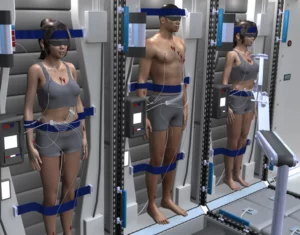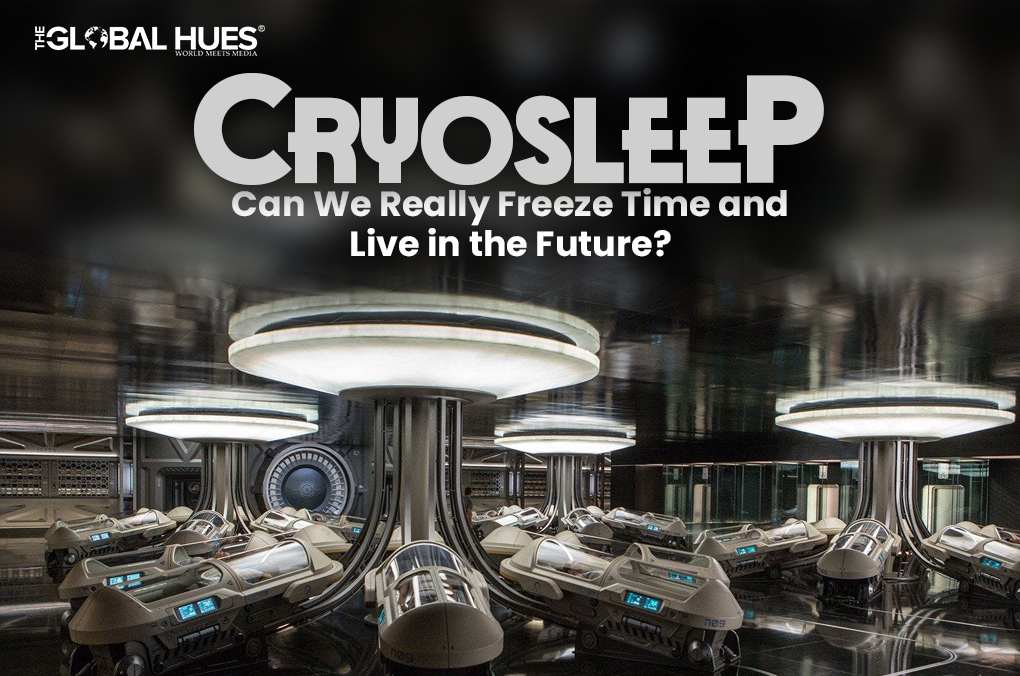Can you call someone who is in another part of the world? The majority of answers will be in the affirmative. But what if this question was asked 500 years ago? Would your answer still be the same? Or would you think it’s impossible? Let’s take another example: What if someone 500 years ago asked to put a tiny machine inside the human heart to regulate its beats? It must have seemed impossible at that time, but today it is possible.
Technology is ever-evolving and challenging everything, even human intelligence. Hence, it shouldn’t surprise us if something impossible today might be feasible tomorrow.
Imagine a technology that can put you in a deep sleep, slowing every metabolic activity in your body, even the ageing of cells. You can be put in such a condition for decades, and when you wake up, you can see the future, which you might never have been able to see, as it is impossible to survive this long for a human, and on top of that, you didn’t age much in this process; you are young. It might sound a little strange like you’ve seen in Sci-Fi movies like Passengers (2016) or Captain America waking up in today’s world after the world war. But can we judge the possibilities? Because there were many things in the past regarded as impossible, and they are possible now.
What is Cryosleep?
Also known as suspended animation, Cryosleep, is the state of putting the human body below -200 degrees Celsius to slow the biological processes of the human body.
Although many animals hibernate to survive adverse weather effects and a lack of food, it is impossible for humans. Various studies are being conducted to make it possible for humans artificially, but there is no concrete proof for its possibility.
But for the scientists, it is an optimistic approach. There are various well-preserved animals found in temperatures below freezing, and research has been going on. However, it is still fascinating to think of such a possibility that might pause life and resume it accordingly, but it is still very far from reality.
What is Cryonocis?

Is it possible for technology to challenge death or bring back someone who has died? Many people will think this is impossible; we cannot reverse death. But did you know approximately 300 bodies (legally dead), multiple brains, and even pets are preserved in cryogenic chambers so that they can be revived in the future and the data in the brains can be downloaded? More than 1500 living people have also signed up for preservation.
This seems fascinating and also shows people’s trust in science. It is evident that for the past centuries, we have been redefining what is possible and what is not. But, death?
Many people at cryonics facilities believe that death is a process; it doesn’t happen instantly, and this process can be paused. According to the website of the US’s biggest cryonics facility in Arizona, Alcor, a team waits for weeks for the person on the deathbed to be declared legally dead. They believe that when a person is declared dead, the ‘death process’ has just begun and is not yet complete.
Immediately, the team attaches them to artificial life support systems to prevent brain death. The body is then submerged in freezing water to slow the dying process of vital organs. It is then transferred to their facility in Arizona as soon as possible. The sooner a body reaches them, the better their chance for revival in the future.
The ‘patients’ then go through the process where their blood is removed through the body and replaced by anti-freezing organ preservation fluid. The cryonics facilities then seal the patients in cryogenic chambers that they vacuum seal and fill with liquid nitrogen, topping it up at regular intervals. The fluid in the veins does not freeze and hence doesn’t cause any damage to the body, which is impossible with the blood.
Afterwards, all that is left to do is wait. Wait for what? Wait for the technology to grow so advanced that it can challenge death, challenge the ultimate law of nature, and challenge human intelligence for how far it can go and redefine its capabilities.
Is Cryonics legal?
There is no particular law demonstrating the legality of cryonics, however, there is a well-established law for a person to donate their dead body for research and experimentation. There has been no revival of any cryonics patients yet, hence cryonics still falls under the category of research.
Any person who has been declared dead legally, “an absence of spontaneous respiratory and cardiac functions”, can be put for cryonics. And cryonics on the living human body is regarded as unethical human experimentation and, hence prohibited.
Possibility of Interstellar Travel
If cryosleep becomes possible, it can change the way interstellar travel is done. However, its development is still a work in progress. NASA with SpaceWorks Enterprises, is dedicated to developing similar technology.
This finds its basis in some intense sleep phenomenon called torpor; according to the researchers, this is better than cryogenic freezing. ‘Torpor Inducing Transfer Habitat For Human Stasis To Mars’ is an area of research and experimentation for both companies to develop a deep sleep habitat to transfer the crew to Mars. This will help them overcome the problem of a claustrophobic environment in the space shuttle and save the crew from mental and physical exhaustion as the journey to Mars is very long.
This deep sleep is based on Therapeutic Hypothermia (TH), where the temperature of the human body is lowered by 5 to 10 degrees Fahrenheit, putting the body in an unconscious state and slowing the metabolic rate and body’s energy consumption. Still, they require feeding, unlike cryogenic sleep, this is more like a forced temporary hospitalisation.
The Torpor is also a work in progress, with a greater chance of achievability and in less time than cryogenic sleep.
Advancement in Cryotherapy
Cryotherapy is not a new concept today. Many places worldwide offer cryotherapy, where patients are put in a chamber with a very low temperature to treat problems like swelling. This method is also beneficial when doctors use liquid nitrogen to treat damaged tissues.
Can cryosleep be the advanced version of this therapy? It may act like a medically induced coma with various benefits, where patients can heal without losing their precious years and start their lives from where they left them.
The future seems fascinating. With technology advancing every day, it has become hard to figure out what is possible and what is not.



